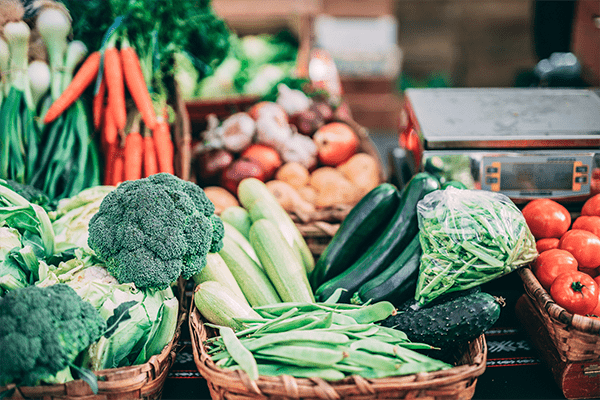
Different Types of Fresh Vegetables
DIFFERENT TYPES OF FRESH VEGETABLES
Nowadays, fresh vegetables may be cultivated in protected environments in less suitable locations but most fresh vegetables are grown all over the world as climate permits. China is said to be the largest producer of fresh vegetables. There is a global trade in agricultural products which allows consumers to purchase different types of fresh vegetables grown in faraway countries.
Depending on the type of fresh vegetables being planted, harvesting the crop is followed by grading, storing, processing, and marketing. The scale of production varies from local farmers supplying the needs of their family for food, or to agri-businesses with vast land to grow the different crops.
It is due to distortion of the natural reality that made us today to eat fresh tomatoes, eggplants and watermelons all year round whenever we want. Nobody can tell you the exact number of different types of fresh vegetables that exist in the world, but there must be thousands of fresh and organic vegetables.
It is estimated that there are over 20,000 species of edible plants called fresh vegetables. There are only 20 species which represent 90% of our food. This has a big impact on our choices of the variety and variability of plants but also on our diet.
We understand that it is easier to eat the same things all the time, but it is not good for the environment or for you. So, if we want to eat better food, we need to start looking for different types of fresh vegetables that we can produce locally.
It is much better for people to take a warm cabbage soup when it is cold season. The lack of seasonality has driven us to less variety of organic vegetables on our plate with consequences on freshness and nutrition. There will always be a question of growing the produce which is seasonal and for local production.Our farmers cannot produce fresh cucumbers during cold season.
Eating local is the first step to diversity in our diet. We can discover different and ancient variety of fresh vegetables. It can vary our diet and we will get the right nutrients through local production.We can search for the most adapted types of fresh vegetables,
There is always an abundance of watermelons in summer or that rich vitamin C fruits are ready during winter. It is amazing that nature knows how to give us what we need even if we also did not notice it. We actually do not need tomatoes all year round, but we do need different types of fresh vegetables all year round!
It is believed that almost 500 varieties of fresh lettuce were produced during ancient times, but today only 36 can be found on supermarket shelves. There is almost 300 varieties of cucumbers, but today we find only about 16 in our salads. This is the time to start changing and recover other ancient types of fresh vegetables, We must eat in a more healthy and diverse manner. It would be good to plant and grow our own fresh vegetables if we have the opportunity to do so. Below are some of the fresh vegetables that is readily available in the market.
|
Artichoke |
Arugula |
Asparagus |
Bell Peppers |
|
Beet Greens |
Beets |
Bok Choy |
Broccoli |
|
Broccoli Rabe |
Brussel Sprouts |
Butternut Squash |
Green Cabbage |
|
Red Cabbage |
Carrots |
Cauliflower |
Celery |
|
Chives |
Collard Green |
Crookneck Squash |
Daikon Raddish |
|
Dandelion Greens |
Eggplant |
Endive |
Garlic |
|
Green Onion |
Jicama |
Kale |
Kimchi |
|
Kohlrabi |
Leeks |
Lettuce |
Mushrooms |
|
Mustard Greens |
Okra |
Red Onion |
Yellow Onion |
|
Parsnips |
Potatoes |
Pumpkin |
Purple Sweet Potato |
|
Raddichio |
Radish |
Tomatoes |
Sauerkraut |
Photo credit: Iñigo De la Maza on Unsplash
